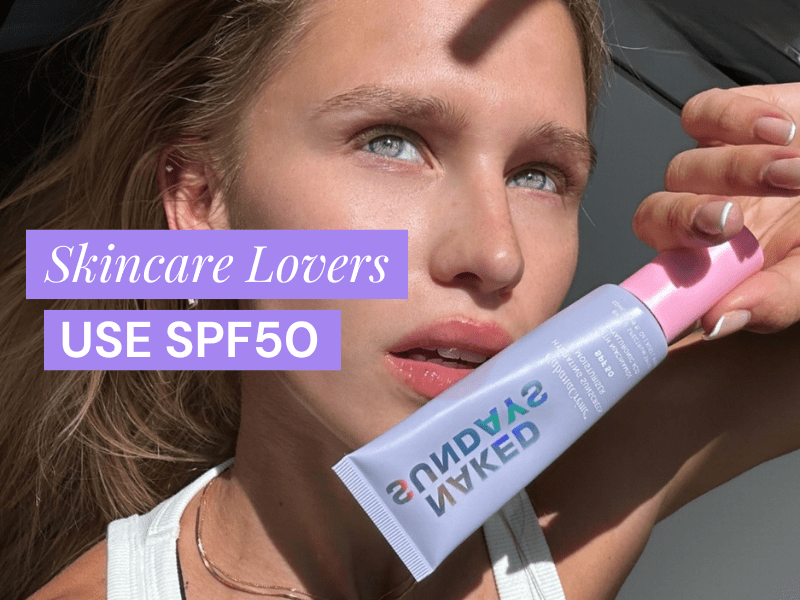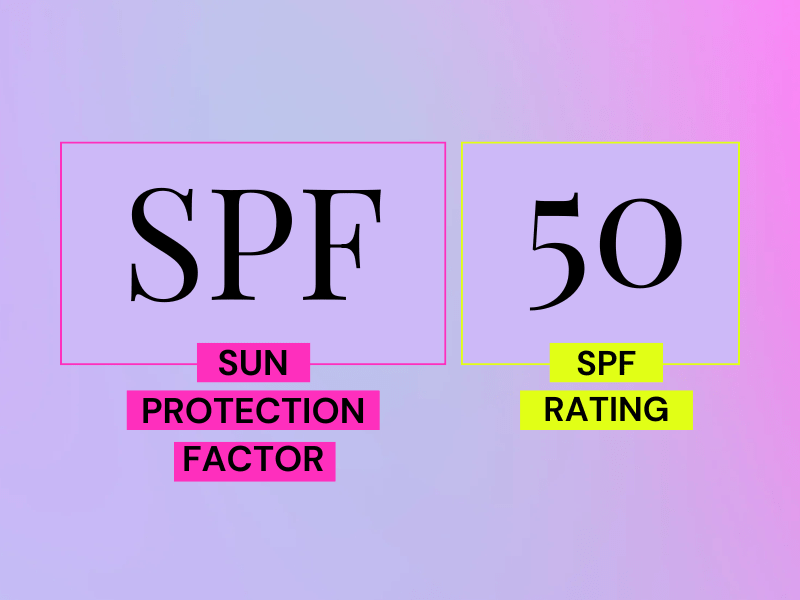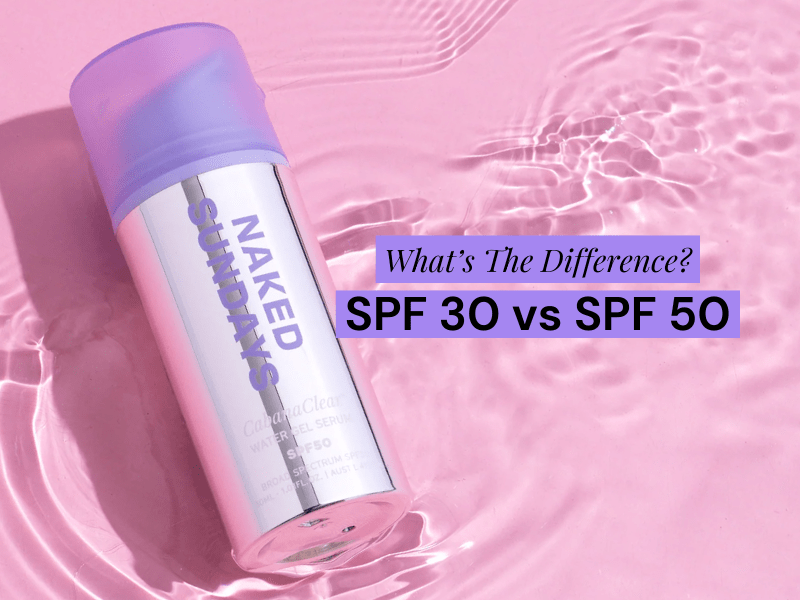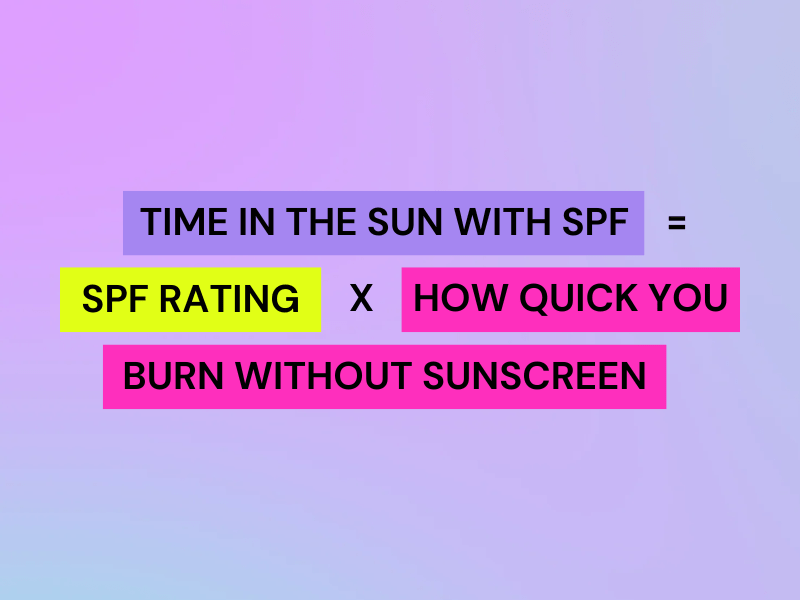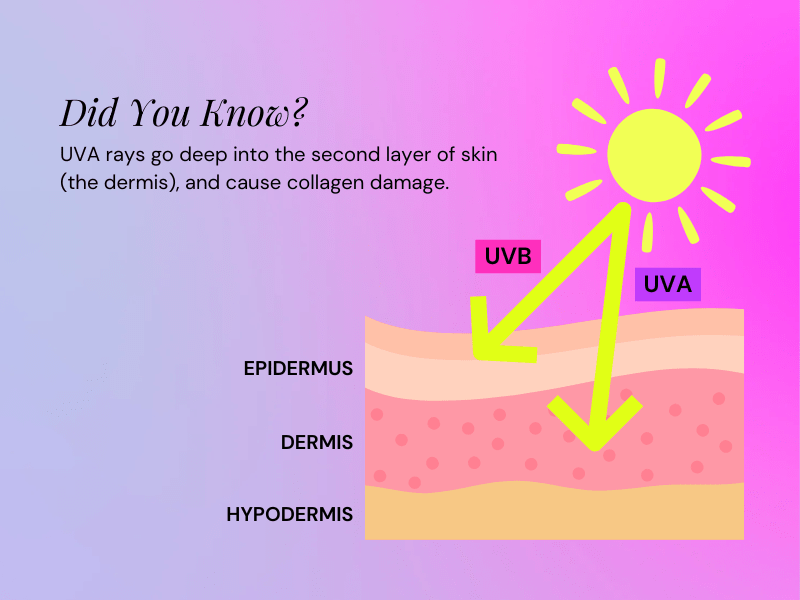The Real Difference Between SPF30 and SPF50 and Why Skincare Lovers Use SPF50
Image: Skincare lovers use SPF50.
When it comes to picking a sunscreen, there’s often confusion about which SPF rating to choose—after all, there’s a lot to pick from. In Australia, where the UV Index can reach extreme levels of 14 in summer, it’s important to understand how SPF30 and SPF50 sunscreens are different.
Skincare lovers, especially those who use ingredients like glycolic acid and retinol in their routines, often opt for SPF50 for extra protection. But how much extra protection does SPF50 really provide?
Everything You Need to Know About SPF, AKA, Sun Protection Factor
Image: SPF stands for sun protection factor, and the SPF rating tells us how long we’re safe in the sun for.
What does SPF mean?
SPF stands for Sun Protection Factor. SPF measures how well a sunscreen can protect the skin from UVB rays, which are responsible for causing sunburn and contribute to skin cancer and skin damage.
What does the number after SPF mean? Eg: SPF50
The number following “SPF” refers to the figure that helps identify the extra time proper application can provide before your skin starts to burn.
A bit confusing? Here’s an example:
Say it takes 10 minutes for your bare skin (no sunscreen applied) to start burning during a day at the beach, but if you applied an SPF50 as directed, you’d be able to extend that time by 50 times.
Using the same example, here’s how much sun protection you’d get in comparison to an SPF30 and SPF15:
- SPF50 x 10 Minutes to burn = 500 minutes to burn
- SPF30 x 10 Minutes to burn = 300 minutes to burn
- SPF15 x 10 Minutes to burn = 150 minutes to burn
It’s worth noting: These numbers aren’t perfect because factors like sweating, towelling off, swimming, or underapplication reduce sunscreen effectiveness.
How Much More Protection Does SPF50 Provide Compared to SPF30?
Image: What’s the difference? SPF 30 vs SPF50
SPF50 not only provides longer protection but also allows fewer UVB rays to penetrate the skin.
According to the Cancer Council:
- SPF30 filters 96.7% of UVB radiation, allowing 3.3% to reach the skin.
- SPF50 filters 98% of UVB radiation, allowing only 2% to reach the skin.
There’s a misconception that the difference between SPF30 and SPF50 is minor (around 1.3%). However, even a small difference in UV exposure can significantly add up over time.
Why Skincare Lovers Use SPF50
Many skincare lovers choose SPF50 or SPF50+ as higher SPF ratings not only provide longer protection, but also allow fewer UVB rays to penetrate the skin.
Damage adds up, even when it starts small.
Over time, even small amounts of unprotected UV exposure accumulate, contributing to long-term skin damage.
This includes collagen breakdown, leading to wrinkles and sagging, as well as dark spots and uneven skin tone.
Years of cumulative damage also further increase the risk of skin cancer.
Many people underapply sunscreen.
Applying too little sunscreen reduces how much protection it gives and allows more UV rays to penetrate the skin. Most people aren’t using enough sunscreen.
Many find it difficult to reapply sunscreen as often as needed.
Sunscreen needs to be reapplied every two hours, especially after sweating, swimming, or towelling off.
However, reapplying during a busy day or over makeup can be inconvenient. This lapse in protection increases the chances of UV exposure, which adds to cumulative skin damage over time.
If your skin is sensitive, any extra protection can help reduce irritation.
Sensitive skin is more reactive to environmental stressors like UV rays, which can cause redness, inflammation, and flare-ups.
Extra sun protection, such as using a higher SPF or wearing protective clothing, helps reduce these triggers. Mineral sunscreens with ingredients like zinc oxide are often recommended, as they are gentler on sensitive skin.
In Australia, extreme UV levels mean that even small amounts of unblocked radiation can be harmful.
Australia has some of the highest UV levels in the world, with the UV Index often reaching dangerous levels of 14 during summer.
Even brief sun exposure without protection can lead to sunburn, skin ageing, and damage.
Some Skincare Makes You Sensitive to the Sun
Certain ingredients like AHAs and retinoids can increase photosensitivity, making the skin more prone to sun damage. These ingredients speed up skin cell turnover, exposing newer, more delicate skin that is vulnerable to UV rays.
Since these are often issues skincare users aim to prevent or slow down, it makes sense to choose a higher SPF for better protection.
Let’s Sum Up
In Australia’s harsh UV environment, SPF50 is generally the better choice. It offers more protection, reduces long-term skin damage, and supports healthier skin.
Always apply sunscreen correctly, reapply regularly, and pair it with protective clothing, a hat, and sunglasses.
FAQs
Is SPF30 Enough for Daily Use in Australia?
In Australia’s intense UV environment, it’s generally better to opt for SPF50. It reduces the amount of UVB penetration and extends your time in the sun before burning, provided you apply it correctly.
Since many people underapply sunscreen, the additional protection SPF50 offers can reduce long-term cumulative damage.
What If I Have Sensitive Skin? Is SPF30 or SPF50 Better?
If you have sensitive skin, SPF50 can offer more protection by allowing fewer UV rays to penetrate and cause irritation.
Many people with sensitive skin prefer mineral sunscreens, which can be gentler on the skin.
It’s important to find a sunscreen that suits your skin type. It’s also why Naked Sundays created a sunscreen range that is SPF50 and SPF50+ that has options for all skin types, including sensitive skin
Why Doesn’t Australia Have SPF100?
The highest rating of SPF you can get in Australia is SPF50+. This is due to regulations around sunscreen labelling.
Wearing sunscreen alone isn’t enough for complete sun protection, so it’s important that people don’t think they’re wearing an invincible shield when they wear sunscreen.
It’s also why we’ve created multiple ways to reapply your sunscreen to make sure being sun safe is easy.
What’s the Difference Between UVA and UVB Rays?
Both UVA and UVB rays are forms of ultraviolet radiation from the sun, but they affect your skin in different ways, and how deeply they penetrate.
UVA Rays penetrate deep into the dermis, the skin's second layer, where UVB Rays primarily affect the epidermis (outer layer of skin).
Some of the effects of UVA rays include:
- Responsible for premature ageing—think wrinkles, fine lines, and sagging skin.
- Contribute to collagen breakdown, which leads to skin losing elasticity.
- Can cause DNA damage, increasing the risk of skin cancer.
Some of the effects of UVB rays include:
- Causes sunburn by damaging surface skin cells.
- Plays a major role in direct DNA damage, making it a key contributor to skin cancer.
Disclaimer
ALWAYS READ THE LABEL AND FOLLOW THE DIRECTIONS FOR USE. Wear protective clothing, a hat, and eyewear when exposed to the sun. Avoid prolonged sun exposure and reapply sunscreen frequently.


